Upper North Philadelphia is a bustling, dynamic region of the city, teeming with rich history and vibrant culture. Known for its diverse communities, this area serves as a microcosm of the broader city, where tradition and innovation coalesce, shaping the unique lifestyle of its inhabitants.
Each neighborhood within Upper North Philadelphia has its own distinct character, and together, they paint a mosaic of city life that is at once both representative of Philadelphia’s history and reflective of its evolving demographic landscape. In addition to the neighborhoods, the region’s notable features and attractions contribute to its unique appeal.
Neighborhoods
Within the broader Upper North Philadelphia area are several smaller neighborhoods, each offering a unique slice of city life. These communities, ranging from Allegheny West’s industrial roots to Hunting Park’s rich historical legacy, create the diverse fabric that defines the region.
Allegheny West
Allegheny West, often characterized by its industrial roots, is a neighborhood in transition. Known for its expansive warehouse spaces, the neighborhood is seeing a wave of development as these spaces are converted into lofts and commercial spaces. The area’s historic row homes also provide a charm that balances the newer developments.
The neighborhood’s location along the Schuylkill River offers residents stunning waterfront views, with many green spaces and trails along the riverfront that are perfect for walking, running, and cycling. The industrial past of Allegheny West is also evident in its strong workforce, with a sense of resilience and community pervading the area.
Furthermore, Allegheny West is increasingly becoming a hub for arts and culture. Various creative spaces and galleries are springing up in repurposed industrial buildings, injecting new energy into the neighborhood and reflecting the creative spirit of its residents.
Fairhill
Nestled in the heart of Upper North Philadelphia, Fairhill is a tight-knit community brimming with cultural richness. Its diverse population contributes to a vibrant local culture, which is reflected in its dynamic street markets, community festivals, and public art. Despite the challenges it has faced, Fairhill has managed to retain its strong community spirit and continues to be a stronghold of cultural expression in the city.
Fairhill’s cultural identity is closely tied to its Latino population, with the community often referred to as “El Centro de Oro” (The Golden Block). This cultural influence is evident in the colorful murals that adorn the buildings, the lively Latino music that fills the streets, and the delicious cuisine found at local restaurants and food stalls.
The neighborhood also boasts several community institutions that serve as the backbone of local life. These include the Maria de los Santos Health Center, the Fairhill Library, and the Providence Center, all of which provide invaluable resources and services to the residents of Fairhill.
Glenwood
Glenwood, located just north of North Philadelphia Station, is a predominantly residential neighborhood with an urban-suburban feel. Known for its ample green spaces and charming Victorian-style homes, Glenwood is a testament to the classic architectural styles that define Philadelphia’s residential districts.
The community is also home to the historic Glenwood Cemetery, a tranquil oasis in the midst of the bustling cityscape. The beautiful grounds, filled with intricate tombstones and well-manicured gardens, serve as a peaceful respite from the fast-paced city life and offer a window into the neighborhood’s past.
Furthermore, Glenwood’s strong sense of community is evident in its active community organizations and initiatives that aim to preserve the neighborhood’s unique character and enhance the quality of life for its residents. From community gardening projects to neighborhood beautification efforts, these initiatives reflect the spirit of cooperation and mutual support that permeates Glenwood.
Hunting Park
Steeped in history, Hunting Park is a neighborhood teeming with historical landmarks and cultural institutions. It is most well-known for the eponymous park at its heart, which serves as a central gathering place for residents. The park, boasting a range of recreational facilities, also hosts numerous community events throughout the year that bring residents together.
The neighborhood also prides itself on its community-led initiatives, such as the Hunting Park Farmers Market, that foster local resilience and sustainability. This dedication to community development and sustainability speaks to Hunting Park’s underlying character – a community that cares deeply about its neighbors and the environment.
Adding to its charm, Hunting Park is home to several historic sites and buildings, including the Hunting Park Bandshell and the Carousel House. These sites not only add to the aesthetic appeal of the neighborhood, but also serve as important reminders of its rich historical legacy.
Nicetown-Tioga
Nicetown-Tioga is a diverse neighborhood with a vibrant local culture. Known for its rich African American heritage, the neighborhood is home to an array of historic sites, cultural institutions, and local businesses that contribute to its unique character.
One of the neighborhood’s key landmarks is the Nicetown Community Development Corporation, a hub for community development initiatives that provide critical services to local residents. The organization plays a crucial role in neighborhood revitalization efforts, working to provide affordable housing and promote economic development in the area.
Furthermore, the neighborhood’s vibrant arts scene, driven by community-based organizations like the Nicetown Arts & Cultural Alliance, contributes significantly to its unique identity. These initiatives, coupled with the rich history and tight-knit community of Nicetown-Tioga, make it an area of Upper North Philadelphia that is brimming with potential and resilience.
History
Unraveling the history of Upper North Philadelphia offers a fascinating journey through time, marked by industrial growth, cultural change, and resilience. Its history has greatly shaped its landscape, influencing the architecture, social fabric, and identity of the region.
In the early 19th century, Upper North Philadelphia was predominantly rural, with a scattering of farmsteads and mills. The Industrial Revolution triggered a transformation, with factories sprouting up, particularly along the region’s waterways. The industrial boom brought a wave of immigrants in search of work, contributing to a rapid population growth and the development of many of the neighborhood clusters we see today.
Places like Nicetown-Tioga and Hunting Park emerged as bustling industrial centers, home to manufacturers of textiles, tools, and transportation equipment. Factories offered employment opportunities, attracting diverse groups of immigrants and workers from across the region and country. This history of industry is still evident in many architectural remnants, such as old factory buildings and workers’ row houses.
The early 20th century saw the expansion of public transportation systems, with trolley lines facilitating easier commutes and encouraging further urbanization of the area. The extension of Broad Street Subway to the Allegheny station in 1928 was particularly transformative, fostering greater connectivity with the rest of Philadelphia.
However, the mid-20th century brought challenges. Deindustrialization led to factory closures and job losses, sparking a period of economic decline. Social and racial tensions also came to the fore, leading to the 1964 Columbia Avenue riot, one of the many incidents of civil unrest that swept across American cities in this period.
Despite these challenges, the latter part of the 20th century and the early 21st century have been marked by resilience and efforts at revitalization. Neighborhood organizations and community activists have striven to address social issues, revitalize commercial corridors, and celebrate the cultural heritage of the area. Meanwhile, the neighborhoods continue to be diverse and vibrant communities, home to a mix of longstanding residents and newcomers.
Today, the historical layers of Upper North Philadelphia remain tangible, woven into the fabric of the neighborhoods. From the industrial past reflected in architectural styles, to the resilience showcased in its community-led revitalization efforts, the history of Upper North Philadelphia is a testament to the evolution of urban landscapes and the enduring spirit of its communities.
Demographics
Upper North Philadelphia, known for its rich history and diverse culture, is home to a vibrant and varied demographic mix that contributes to the unique character of the area. A deeper look into its demographics paints a picture of an area that has been shaped by various socio-cultural factors, adding to the fabric of this part of Philadelphia.
The area is characterized by its multicultural and multigenerational communities. The influence of the immigrant groups that flocked to the area during its industrial peak is still evident, with African American, Hispanic, and Asian communities making up significant proportions of the population. It’s a region where multiple languages can often be heard on the streets, and various cultural celebrations dot the calendar, adding color and vibrancy to the community life.
The African American community, particularly, has played a significant role in shaping the culture and identity of Upper North Philadelphia. Today, they continue to form a major part of the population, contributing to the socio-cultural landscape through arts, music, and community activism.
A trend worth noting is the increasing number of young professionals and students calling this area home, drawn to the affordable housing options and proximity to educational institutions like Temple University. This younger demographic adds a fresh dynamic to the area, contributing to the growing arts scene and the increasing number of trendy eateries and coffee shops that dot the neighborhoods.
Despite its vibrant diversity, Upper North Philadelphia faces socio-economic challenges, with higher poverty rates compared to other parts of the city. However, community-led initiatives and development projects are actively working to address these challenges, fostering social cohesion and striving for economic revitalization.
In essence, the demographics of Upper North Philadelphia mirror its history — diverse, dynamic, and resilient. It’s a melting pot of cultures that carries a rich legacy while looking towards a future of growth and unity.
Notable Features
Upper North Philadelphia’s distinct character is reflected in its notable features — from its historical landmarks to its cultural institutions, vibrant murals, and recreational spaces. These features form a tangible link to the area’s rich history and diverse culture.
One of the most striking features of Upper North Philadelphia is its architectural diversity. The area hosts a mix of residential styles from row homes that echo the city’s industrial past, to Victorian mansions and modern apartments. A drive through these neighborhoods reveals a panorama of architectural styles, each telling a unique story about different periods in the area’s history.
Cultural institutions and art are another major draw in Upper North Philadelphia. The area is home to the renowned Temple University, a hub for education, research, and arts. The university often hosts events and performances that add to the cultural vitality of the area. Additionally, the neighborhoods are adorned with a series of stunning murals that reflect the area’s history and the community’s spirit. The Mural Arts Program in Philadelphia is the nation’s largest public art program and has been transforming the city’s landscapes since 1984, with Upper North Philadelphia being no exception.
Outdoor enthusiasts will find the green spaces in Upper North Philadelphia quite appealing. Hunting Park, with its 87-acres of green space, a community recreation center, and various sports facilities, is a testament to the area’s commitment to providing residents with quality recreational spaces.
Another notable feature of Upper North Philadelphia is the bustling Broad Street that cuts through the heart of the area. This major city artery is a hub for commerce and transportation and is home to various businesses, eateries, and historic buildings.
Despite the urban landscape, Upper North Philadelphia hasn’t forgotten its industrial roots. The remnants of its industrial past, including historic factories and warehouses, still dot the area, some of which have been repurposed into lofts, offices, and commercial spaces.
In conclusion, the notable features of Upper North Philadelphia are as diverse and dynamic as the people who call this area home. They are emblematic of the area’s past, present, and future — showcasing a remarkable blend of history, culture, and urban life.
Conclusion
Upper North Philadelphia, an area enriched by diverse neighborhoods, fascinating history, and distinctive features, holds a unique place in the heart of Philadelphia. With neighborhoods like Allegheny West and Fairhill showcasing their distinct characters, every corner of this area tells a unique story.
The rich history of Upper North Philadelphia remains apparent in its landmarks and narratives, shaping its evolution and cultural landscape. For a more comprehensive exploration of this vibrant city, don’t miss out on “Discovering Philadelphia: A Comprehensive Guide to the City of Brotherly Love“. This detailed guide will help you delve deeper into the dynamic and unique tapestry that Philadelphia offers.
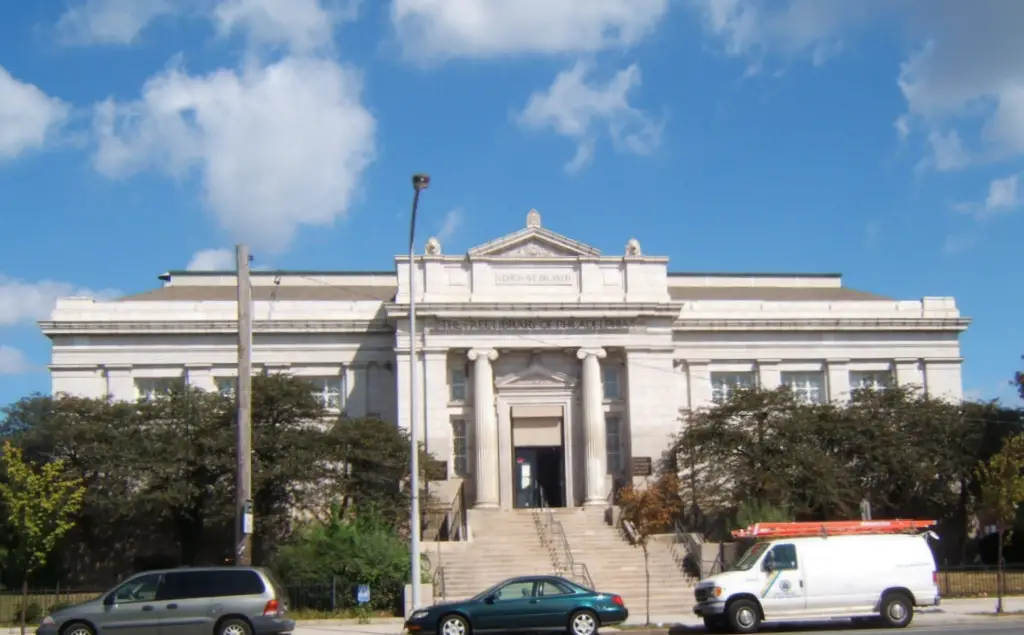
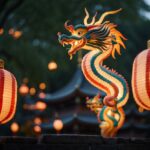
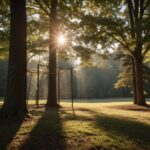

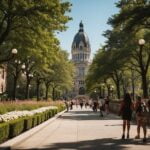
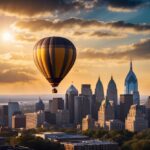
1 thought on “Unveiling the Charm of Upper North Philadelphia: A Comprehensive Look at Its Neighborhoods, History, and Distinct Features”